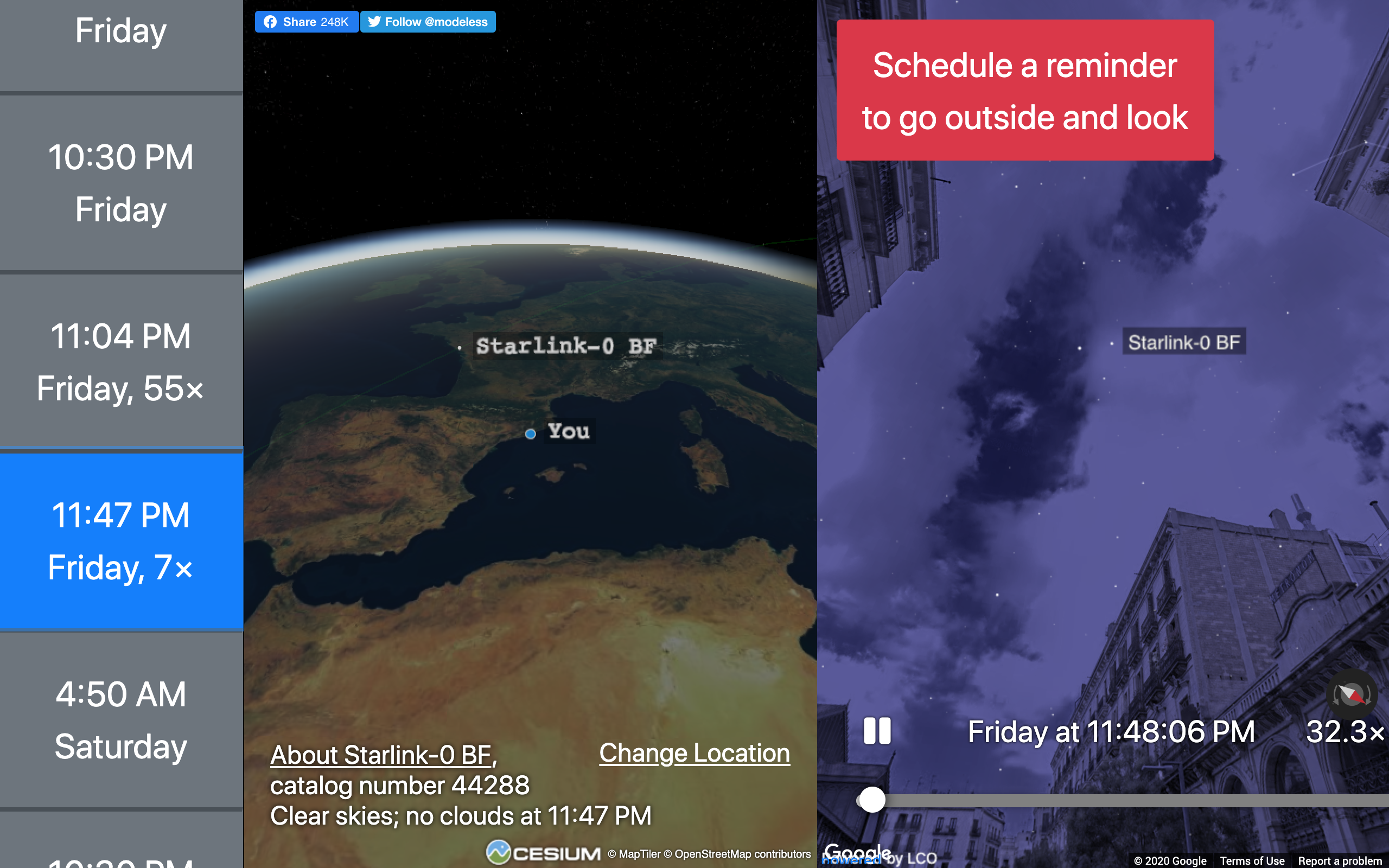PROJECT
Communication in the Age of Isolation
IN COLLABORATION WITH
ALGOFICTION
VIDEO
2:28 MIN
COLOR
ENG + ENG SUBTITLES
ROYAL COLLEGE OF ART
ALL IMAGES
Laia Miret
APR-MAY 2020
Communication in the Age of Isolation
IN COLLABORATION WITH
BTU / BT Archives
ALGOFICTION
VIDEO
2:28 MIN
COLOR
ENG + ENG SUBTITLES
ROYAL COLLEGE OF ART
ALL IMAGES
Laia Miret
Maxar Technologies
APR-MAY 2020
When the pandemic started, I was looking at satellites, specifically the Starlink. Starlink has the aim to hyper-connect the world by making the internet more accessible and faster. The orbits, which are set at a relatively short distance to our planet, are planned to be used also for travelling.
In Western cultures, it is popular to believe beloved ones become a star when they pass away. While I was monitoring the Starlink, all I could think about was a close relative that recently died of COVID-19, as if looking at the stars at night would establish a connection– the only one technically impossible to materialise.
This video piece was or is still part of a personal process of mourning. Whilst it is articulated around the main research topic, the happening of death interrupts the narrative, creating perhaps a new one.
![]()
Video piece included in Dis/connect, a collaborative web publication by the MRes Communication Design Pathway at the Royal College of Art, in partnership with the BT Archives. Each piece speculates on the dis/connected future of telecommunications, and each is inspired by an artefact from the archive’s collection. The work was produced during the Covid-19 pandemic.


Capture of a group videocall impersonating our objects, with Parinda Sakdanaraseth and Ming Ling.
Poster of the project, designed by Sun Moon, Yuzhen Kai and Melissa Lu.

I selected a picture of the Telstar satellite from the BT Archives. These are two texts extracted from newspapers published the day of launching, the 11th of July of 1962:
[1]
This is Telstar
Telstar, the world’s first broad band active communication satellite, was launched into orbit by the United States National Aeronautics and Space Administration from Cape Canaveral the 10 July. It is circling the earth once every 158 minutes at a height of between 600 to 3,500 miles and is mutually visible to the ground stations at Goonhilly and Andover, Maine, for up to some 30 minutes on each of three or four consecutive passes in each 24 hours.
Circular in shape and painted sapphire-blue and silver, Telstar has nearly 15,000 parts stored inside its 34-inch diameter. It draws its power from the 3,600 solar cells on the surface which turn the light of the sun into electrical energy for supplying the electronic equipment in the satellite and picks up the faint signals from the transmitting ground station, amplifies and re-transmits them on another frequency to the receiving ground station. The satellite contains equipment suitable for television picture, or up to some 600 telephone channels.
Telstar was designed by Bell Telephone Laboratories.
[2]
Communication on the Moon
We have looked at TELSTAR in some detail so far as communications on the earth itself are concerned. But sooner or later, man will leave the earth, land on the moon and establish bases there. How will he communicate between bases which are widely separated?
Ordinary radio will be useless – because the moon has no appreciable ionosphere reflecting radio waves. To make matters worse, the moon is very small and its curvature correspondingly great and its horizon very near. The moon is very small and its horizon very near. The moons is so curved that even an aerial as high as the Eiffel Tower would be completely below the horizon at a distance of 20 miles!
(…)
Of course, the earth-moon system is not a mathematically ideal one. But Lagrange’s purely theoretical reasoning might give new leads towards a practical solution.

